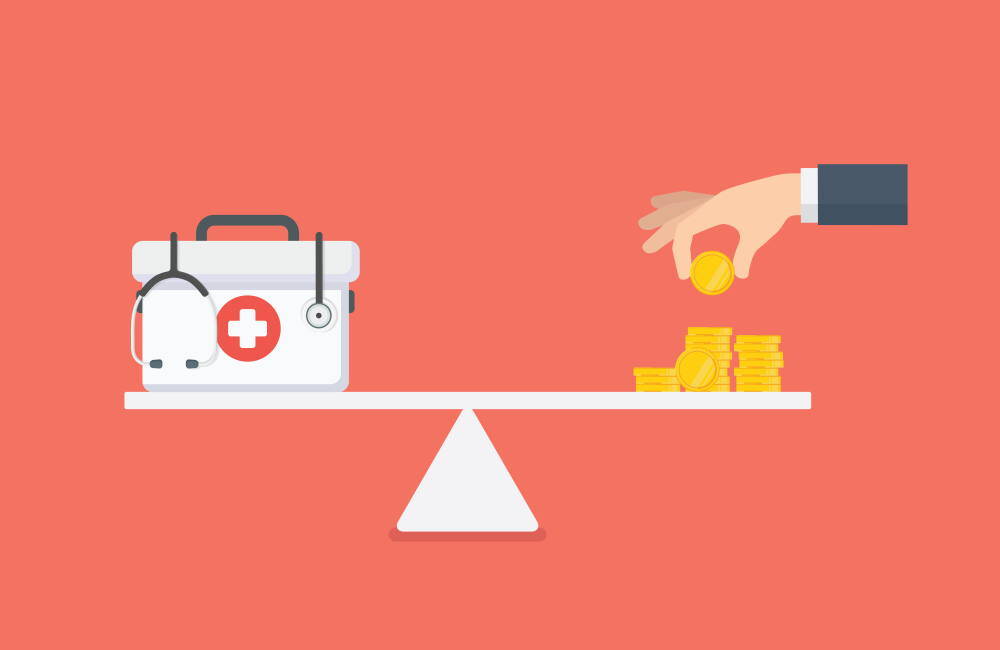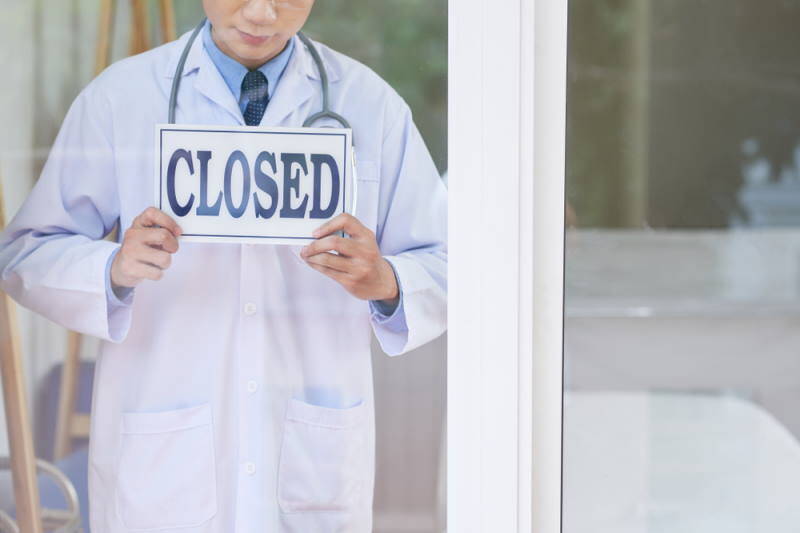The Lopsided Impact of Declining Medical Use Rates from COVID-19

COVID-19 has had a dramatic and negative effect on public health, the financial stability of individuals, the viability of small businesses and the American economy at large. Just recently, the Commerce Department of the United States issued its forecast that 2020 will see a 35 percent decline in Gross Domestic Product (GDP). GDP fell only 30% between 1929 and 1932, according to the Encyclopedia Britannica. Ben Casselman of the NY Times reports that Q2 2020 is “expected to be the worst quarter in the 70-plus years that quarterly GDP statistics have been compiled.”
This economic decline chiefly has been due to the need to reduce the spread of the virus through imposing shelter-in-place orders and limiting the size and number of gatherings, which has in turn resulted in a collapse of aggregate demand for services and ultimately the closure of many businesses. The uneven nature of these interventions nationally has, of course, extended the duration of the decline and the magnitude of its impact on demand and employment of service workers. In short, people stopped making unnecessary trips to the store, restaurants closed dining rooms, and more relevant to our analysis, patients stopped going to the doctor for minor illnesses or elective procedures.
Whether patients chose to stay safe at home or were forced to delay treatment because their physician stopped seeing patients in-person or the government paused elective procedures, patients were no longer seeking healthcare at normal rates. The result of this change in the rate at which people sought medical intervention has had vastly different implications for patients, providers and insurance companies.
Implications for Patients
What has the new environment meant for the average person? It might be time to start flossing independently, and that knee replacement might have to wait because there might be a line and because of the risk of nosocomial infection. There is of course the risk of suspended droplets of infectious virions, which is nothing to sneeze at, to use a colloquialism, even from Kevin Hart distance. It also means that those premiums you are paying may never really get used.
In fact, insured individuals are paying premiums based on historic usage that hasn’t come to fruition during the COVID health crisis. Americans have delayed treatment, whether they chose to or were forced to, and that drastically changed the number of claims paid by insurance carriers. Even COVID-19 related claims didn’t close that gap. That means a lot of money in premiums is entering the coffers of big carriers, and not nearly as much is being paid in claims. The natural question is, where are the savings?
Those patients who are also drivers may have seen the effects of a similar phenomenon in April when the auto insurance industry experienced the same unexpected loss ratio improvement. The shutdowns and stay-at-home orders also meant fewer drivers were on the road. This made for some automotive feats of legend – indeed maybe the fastest car on the interstate is a rental, but the most important result was individuals were driving less and getting into fewer accidents.
Major car insurance companies responded by issuing rebates to their customers. Did car insurance carriers issue rebates out of the goodness of their hearts? Did they do it because it’s good business? Maybe a little of both? While States do individually regulate car insurance premiums to avoid companies charging exorbitant rates, there isn’t a rule that says a surprise windfall must be paid back to the insured. But there was pressure from groups like the Consumer Federation of America and the center for Economic Justice.
Implications for Providers
Just like Hertz and other suppliers to the driving marketplace suffered as the aggregate demand side collapsed and the automobile insurance business reaped an unexpected windfall, providers too have seen financial pressure. Hospitals are losing millions of dollars per day, according to CNBC, and the net impact as of June 19 2020 was forecasted to be a loss as big as $200 billion by the end of June, according to MarketWatch. In the same article, The Chartis Center for Rural Health found that “453 of the country’s 2,000 rural hospitals were in danger of closing” as recently as June. It’s now August, and hospitals from Florida to New Hampshire are under intense pressure from losses. Hertz has to liquidate 200,000 cars by the end of the year. America clearly can’t afford to bankrupt its hospitals in the middle of a pandemic, so what’s next?

Worse, the phenomenon is not just impacting hospitals. It’s easy to focus on hospitals because they are large regional employers (which has other economic implications), serve tremendous acute care needs and accrue the lion share of healthcare expenditure. However, a recent article in Rev Cycle Intelligence by Jacqueline LaPonte highlights a survey by the American Medical Group Association (AMGA) showing that 90% of medical groups and integrated delivery systems have seen at least a 25% decline in revenues. Forty percent of groups saw their revenues decline by twice that amount. The impact is so great, in fact that AMGA President and CEO Jerry Penso is urging Congress to “stabilize the front lines” during this period of crisis. And there is no real end in sight, so many are investing in telehealth capabilities which, once in place, could change ambulatory care forever. These investments are, however, only available to those provider groups that haven’t burned through their reserves to offset payrolls or buy Personal Protective Equipment (PPE).
The Reality for Insurance Carriers
 Meanwhile, insurance carriers are like beavers swimming upstream of their dams.
Meanwhile, insurance carriers are like beavers swimming upstream of their dams.
In 2020, leading health insurance carriers reported record profits for the second quarter, billions over the second quarter last year. According to the New York Times, the Health and Human Services department is pressuring companies to remedy the situation, but that may take some time.
 A more sophisticated approach to this impoundment might be to realize that it can’t be drained so easily. What sort of remedy is appropriate? Whether that will be through speedy rebates, like we saw with the car insurance industry, reduced premiums, or a combination of both, remains to be seen.
A more sophisticated approach to this impoundment might be to realize that it can’t be drained so easily. What sort of remedy is appropriate? Whether that will be through speedy rebates, like we saw with the car insurance industry, reduced premiums, or a combination of both, remains to be seen.
According to the National Association of Insurance Commissioners, “Insurers must provide a rebate to consumers if the percentage of premium expended for medical care and health care quality is less than 85% in the large group market and 80% in the small group and individual markets. In 2011, insurers owed 12.8 million consumers a total of 1.1 billion dollars in rebates, according to Congressional Research Service.” Milliman summarized nicely in 2015 how this also applies to the Medicare Advantage insurers. Further, Medicaid.gov provides guidance on application of these same requirements to managed Medicaid plans. But all of these procedures are based on retrospective reconciliations, meaning the rebates are computed and issued after the impact period has passed and settled.” Until then, there will be more water upstream than downstream. The next two sections will explain.
Will the Government Prop Up Struggling Providers?
If the insurance companies can’t pass on the savings on use rates to offset provider revenue losses, and since even if they could through value-based pricing models, value-based agreements are rising but are not the norm, maybe the government could help to offset provider losses?
As of now, it is unclear that any sort of support could be funded. Congress adjourned without reinstating paycheck protection programs after an impasse that has basically precluded a renewal of the program with or without changes advocated by the parties. A provider-specific rescue from new subsidies seems unlikely. This seems particularly true since even the public health agencies, which are notably not for profit, are seeing their resources drying up.
As previously noted, at least in the government sponsored insurance market, Medical Loss Ratio (MLR) rules define the mechanism for the government to recoup funds from insurance companies in Federal programs like Medicare Advantage and Federal-State partnership-based managed Medicaid plans. Whether these funds, if recouped, could be re-directed, remains to be seen.
So, Where Does it End?
We’ll have to wait and see. On one hand, as of mid-August, the corona virus outbreak is not under control, and Congress has not reached an agreement to extend relief while a growing number of Americans are unemployed and as many as 20% with children at home are seeking help from food banks. On the other hand, the US stock market reached its February high this week and insurance and tech companies are realizing tremendous profits. With an election on the horizon, and children going back to school in anti-aerosol masks, providers and insurers may have to improvise their own solutions, some of which may mean extending the innovative funding ideas from the earliest days of the crisis.
For Further Reading
https://www.kff.org/private-insurance/issue-brief/data-note-2020-medical-loss-ratio-rebates/
https://www.irs.gov/newsroom/medical-loss-ratio-mlr-faqs
https://content.naic.org/cipr_topics/topic_medical_loss_ratio.htm
https://www.milliman.com/en/insight/2015/the-medicare-advantage-medical-loss-ratio-requirement/
https://www.medicaid.gov/medicaid/managed-care/guidance/medical-loss-ratio/index.html